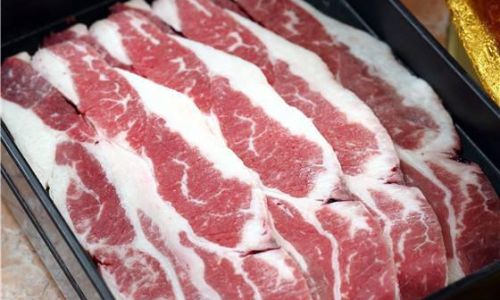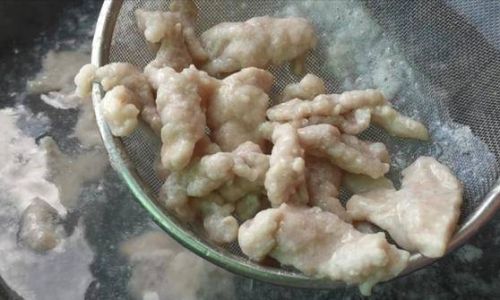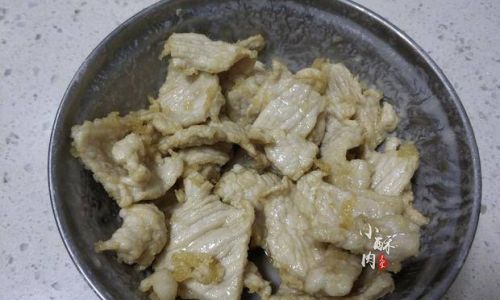Table of content
Chaoshan cuisine, renowned for its delicate flavors and meticulous preparation techniques, has gifted the world with culinary treasures like beef hotpot, tea-smoked duck, and the star of this article: Chaoshan meat slices. These thinly sliced, marinated pork cuts are a staple in regional dishes, prized for their tender texture and ability to absorb flavors. Yet, for home cooks and aspiring chefs alike, mastering the precise cooking time for these slices remains a subject of debate. How long should Chaoshan meat slices be cooked to achieve the perfect balance of tenderness and safety? This article delves into the science, techniques, and cultural nuances behind cooking this beloved ingredient to perfection.
The Anatomy of Chaoshan Meat Slices
Before discussing cooking times, it is essential to understand the composition of Chaoshan meat slices. Typically crafted from pork tenderloin or shoulder, these slices are marinated in a blend of soy sauce, cornstarch, sugar, and aromatic spices like star anise or Sichuan pepper. The cornstarch serves a dual purpose: it tenderizes the meat and creates a protective coating that seals in juices during cooking. The slices are cut against the grain into paper-thin strips, often no thicker than 2 millimeters, to ensure rapid and even cooking.
The Science of Cooking Time
The ideal cooking time for Chaoshan meat slices hinges on three factors: heat intensity, meat thickness, and desired texture. Overcooking risks transforming tender slices into rubbery, flavorless morsels, while undercooking poses health risks. Below is a breakdown of cooking methods and their respective timeframes:

Boiling in Soup (Recommended for Hotpot or Noodle Dishes)
- Method: Submerge the meat slices in gently simmering broth (around 85–95°C or 185–203°F). Avoid boiling vigorously, as this disrupts the cornstarch coating and toughens the meat.
- Timeframe: 30–90 seconds.
- Visual Cues: The meat changes from pink to opaque, and the edges curl slightly.
- Texture Test: Gently press a slice with chopsticks—it should yield easily without resistance.
Stir-Frying (Ideal for Quick Dishes)
- Method: Use a wok or skillet preheated to high heat (190–230°C or 375–450°F). Add a thin layer of oil and cook the meat in batches to prevent steaming.
- Timeframe: 1–2 minutes per batch.
- Visual Cues: The meat develops a light sear, and the edges brown slightly.
- Texture Test: The slices should feel springy to the touch, with no residual pinkness.
Poaching in Flavored Liquid (for Dishes Like Congee or Stews)
- Method: Simmer the meat in a seasoned liquid (e.g., ginger-scented broth) at 75–85°C (167–185°F).
- Timeframe: 2–3 minutes.
- Visual Cues: The meat floats to the surface and loses its translucence.
- Texture Test: The slices should separate easily with minimal effort.
Critical Variables Affecting Cooking Time
- Meat Thickness: Even a 1-millimeter variance in slice thickness can alter cooking time by 15–20 seconds. Invest in a sharp knife or consider partially freezing the meat for 20 minutes before slicing to ensure uniformity.
- Initial Temperature: Room-temperature meat cooks faster than chilled slices. Remove meat from the refrigerator 10–15 minutes before cooking.
- Heat Source Consistency: Gas stoves and induction cookers heat differently. Adjust timings based on your equipment’s power.
- Altitude: At high elevations, water boils at lower temperatures, potentially extending cooking times by 20–30%.
The Perils of Overcooking and Undercooking
- Overcooking: Beyond 2 minutes in boiling broth or 3 minutes in a wok, the meat’s proteins contract excessively, squeezing out moisture and resulting in a dry, chewy texture.
- Undercooking: Pork must reach an internal temperature of 63°C (145°F) to eliminate harmful bacteria like Trichinella. Use a meat thermometer for precision, especially when experimenting with thicker slices.
Cultural Context: Why Precision Matters
In Chaoshan cuisine, cooking is an art form where timing is as revered as ingredients. Traditional chefs train for years to master the “three seconds” rule—the brief window between undercooked and overdone. This precision reflects broader cultural values: respect for ingredients, patience, and the belief that food should nourish both body and soul.
Advanced Techniques for Enthusiasts
- Velveting: A Chinese technique where meat is marinated in a mixture of egg white, cornstarch, and oil before cooking. This creates an ultra-tender texture and shortens cooking time by 10–15 seconds.
- Flash-Cooking: For hotpot enthusiasts, dipping slices in boiling broth for 8–12 seconds (depending on thickness) yields a melt-in-the-mouth consistency.
- Resting Period: After cooking, let the meat rest for 1–2 minutes to redistribute juices. This step, though counterintuitive, prevents dryness.
Pairing and Presentation
Chaoshan meat slices shine in dishes like niu rou huo guo (beef hotpot), chao shou (noodle soup), and cong you bin (scallion pancake wraps). Garnish with fresh herbs (cilantro, Thai basil), pickled vegetables, or a drizzle of chili oil to enhance flavor contrasts. For a modern twist, serve the meat over a bed of sautéed enoki mushrooms or alongside roasted sweet potatoes.

Troubleshooting Common Issues
- Meat Toughens Immediately: Overcooking. Reduce heat and cooking time.
- Slices Stick to the Pan: Insufficient oil or overcrowding. Use a neutral oil with a high smoke point (e.g., peanut or grapeseed) and cook in batches.
- Flavor is Bland: The marinade lacks seasoning. Increase soy sauce or add a splash of Shaoxing wine.
Nutritional Profile and Dietary Considerations
A 100-gram serving of Chaoshan meat slices provides approximately 145 calories, 22 grams of protein, and 5 grams of fat (depending on the cut). Pork tenderloin is a lean source of B vitamins, iron, and zinc. However, the cornstarch marinade may increase carbohydrate content—opt for low-sodium soy sauce and limit added sugars for healthier preparations.
Conclusion: The Zen of Timing
Cooking Chaoshan meat slices to perfection is a dance of observation and intuition. While guidelines suggest 30 seconds to 3 minutes, the true answer lies in understanding your stove, knife skills, and the subtle cues the meat provides. Whether you prefer your slices silken in broth or caramelized in a wok, the key is to treat each piece with care—a philosophy as timeless as Chaoshan cuisine itself.

In a world that often rushes, mastering the 90-second simmer or the 2-minute stir-fry offers a meditative pause. It reminds us that great food, like life’s simplest pleasures, rewards those who wait—but never too long.





0 comments